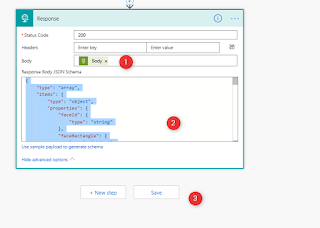The below script helps in restoring a search service application to another sharepoint farm. Before running below script, you need to take a back up of existing Search DB's ( with or without crawl db) to the new farms SQL server.
$saAppPoolName = "SearchService_AdminAppPool"
# Search Specifics, we are single server farm
$searchServerName = (Get-ChildItem env:computername).value
#Web Front End servers
$hostA = ""Server1"
$hostB = ""Server2"
#Servers hosting Search Components
$hostD = "Server1"
$hostE = "Server2" #In case of running components on multiple servers.
$IndexLocation = "F:\Apps\SearchIndex"
$serviceAppName = "Search Service Application"
$searchDBName = "Search Admin DB"
# Grab the Appplication Pool for Service Application Endpoint
$saAppPool = Get-SPServiceApplicationPool $saAppPoolName
# Start Search Service Instances
Write-Host "Starting Search Service Instances..."
#Start-SPEnterpriseSearchServiceInstance $searchServerName
#Start-SPEnterpriseSearchQueryAndSiteSettingsServiceInstance $searchServerName
# Create the Search Service Application and Proxy
Write-Host "Creating Search Service Application and Proxy..."
$searchInstance = Get-SPEnterpriseSearchServiceInstance -local
$searchServiceApp = Restore-SPEnterpriseSearchServiceApplication -Name $serviceAppName -ApplicationPool $saAppPoolName -AdminSearchServiceInstance $searchInstance -DatabaseName $searchDBName
$searchProxy = New-SPEnterpriseSearchServiceApplicationProxy -Name "Service Application and Proxy" -SearchApplication $searchServiceApp
# Clone the default Topology (which is empty) and create a new one and then activate it
Write-Host "Configuring Search Component Topology..."
$clone = $searchServiceApp.ActiveTopology.Clone()
#$searchServiceInstance = Get-SPEnterpriseSearchServiceInstance
$searchServiceInstance1 = Get-SPEnterpriseSearchServiceInstance -Identity $hostD
$searchServiceInstance2 = Get-SPEnterpriseSearchServiceInstance -Identity $hostE
#We need only two admin component
New-SPEnterpriseSearchAdminComponent -SearchTopology $clone -SearchServiceInstance $searchServiceInstance1
New-SPEnterpriseSearchAdminComponent -SearchTopology $clone -SearchServiceInstance $searchServiceInstance2
#We need two content processing components
New-SPEnterpriseSearchContentProcessingComponent -SearchTopology $clone -SearchServiceInstance $searchServiceInstance1
#New-SPEnterpriseSearchContentProcessingComponent -SearchTopology $clone -SearchServiceInstance $searchServiceInstance2
#We need two analytics processing components
New-SPEnterpriseSearchAnalyticsProcessingComponent -SearchTopology $clone -SearchServiceInstance $searchServiceInstance1
#New-SPEnterpriseSearchAnalyticsProcessingComponent -SearchTopology $clone -SearchServiceInstance $searchServiceInstance2
#We need two crawl components
New-SPEnterpriseSearchCrawlComponent -SearchTopology $clone -SearchServiceInstance $searchServiceInstance1
#New-SPEnterpriseSearchCrawlComponent -SearchTopology $clone -SearchServiceInstance $searchServiceInstance2
#We need two query processing components
New-SPEnterpriseSearchQueryProcessingComponent -SearchTopology $clone -SearchServiceInstance $searchServiceInstance1
New-SPEnterpriseSearchQueryProcessingComponent -SearchTopology $clone -SearchServiceInstance $searchServiceInstance2
New-SPEnterpriseSearchIndexComponent -SearchTopology $clone -SearchServiceInstance $searchServiceInstance1 -RootDirectory $IndexLocation -IndexPartition 0
New-SPEnterpriseSearchIndexComponent -SearchTopology $clone -SearchServiceInstance $searchServiceInstance2 -RootDirectory $IndexLocation -IndexPartition 0
#New-SPEnterpriseSearchAdminComponent –SearchTopology $clone -SearchServiceInstance $searchServiceInstance
#New-SPEnterpriseSearchContentProcessingComponent –SearchTopology $clone -SearchServiceInstance $searchServiceInstance
#New-SPEnterpriseSearchAnalyticsProcessingComponent –SearchTopology $clone -SearchServiceInstance $searchServiceInstance
#New-SPEnterpriseSearchCrawlComponent –SearchTopology $clone -SearchServiceInstance $searchServiceInstance
#New-SPEnterpriseSearchIndexComponent –SearchTopology $clone -SearchServiceInstance $searchServiceInstance
#New-SPEnterpriseSearchQueryProcessingComponent –SearchTopology $clone -SearchServiceInstance $searchServiceInstance
$clone.Activate()
Get-SPEnterpriseSearchTopology -SearchApplication $ssa
# Additional
$ssa = Get-SPEnterpriseSearchServiceApplication "Search Service Application"
$admin = Get-SPEnterpriseSearchAdministrationComponent -SearchApplication $ssa
$admin | Set-SPEnterpriseSearchAdministrationComponent -SearchServiceInstance $searchServiceInstance1 -Force
$si = Get-SPEnterpriseSearchServiceInstance -Identity a007f95c-e67e-4150-ab8f-7fff8a71d5b6
$varSearchApp = get-spenterprisesearchserviceapplication
Set-SPEnterpriseSearchAdministrationComponent -SearchApplication $varSearchApp -SearchServiceInstance $si
Feel free to reply in case of any queries
























